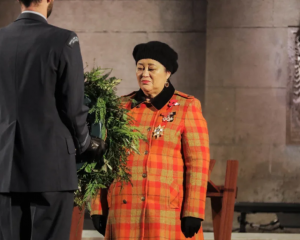It was supposed to be a fun afternoon of four-wheel-driving at Muriwai Beach - but four friends who set out for an adventure never came home.
Imad Dib, 31, Dilpreet Singh, 32, Syed Haris Jafri, 29, and Pulkit Malhotra, 27, all died when the 4WD they were in rolled on the West Auckland beach just before 5pm on Sunday.
The three older men had been working at Queens Academic Group in Auckland since last year. Mr Malhotra had arrived from India recently.
One of the first people to reach the scene of the crash spoke to the Herald last night about the frantic effort to recover three of the men from the incoming tide and revive the fourth.
The woman, who did not want her name published, was driving with her partner when they chanced upon the mangled Mitsubishi Pajero.
Another driver waved them down and, as they stopped, they saw the horrific aftermath of the crash. Three bodies were in the surf, spread out from each other and about 100m to the right of the car.
"[The other driver] yelled at me to check pulses and I didn't know what he was talking about until I looked in the water and there were three bodies - literally one after the other," the woman said.
The fourth man was lying about 20m from the car, trapped in debris.
"The door frame was still attached to the car. It was like the window - the black thing around your window frame - had come off and he was weaved in between that."
The woman said she checked the bodies lying in the waves.
"All three had no pulse whatsoever."
She waved down more people to help her and her partner to move the bodies on to the beach.
"We pulled in the first person and the second person, and I got to the third person and I went to pick his arm up and it was completely pulled away from his body," she said.
She went into shock and was unable to move. Her partner came over, picked the man up in his arms and moved him to the beach.
A group of about 12 people gathered and were trying to help the survivor, who was in a bad way.
They collected pieces of wreckage and built them around the survivor to protect him from the waves.
"Then we got some other guys ... to grab spades out of our car and start building a trench so the water could go down into the trench and not get the guy, because he was just taking mouthfuls of water after water," the woman said.
The man was still breathing, but was stuck in the door frame and had bits of the car all around him, wedged in between his arm.
"He wasn't making a sound - he wasn't crying or moaning or anything. He was just lying there, so I just held his hand and I just held his head up out of the water and put a jacket over him, trying to keep him warm.
"But because the tide was still coming in, I didn't really want to move him because I didn't know what his injuries were ... so I just was talking to him and talking to him, which felt like forever."
When the Westpac rescue helicopter landed, the medics picked the man up and moved him to the beach.
"They put oxygen in his stomach, trying to breathe for him, and then ... minutes later they put a sheet over his head and said a time and I kind of knew straight then and there that the fourth person was also gone."
After the bodies were recovered the woman collected personal documents and other items from the bodies and crash site to hand over to police to help identify the victims.
"One of the deceased members - who had passed away originally - his phone was actually ringing. So I went in his pocket and got his phone out."
She put the phone on his stomach so the police could see who it belonged to.
"I was not going to answer that phone call, that's for sure."
She gave police a brief statement. She overheard a man who saw the crash describe what happened.
"He said it was about 90-95km per hour. But because he was going quite close to the water, there would have been soft spots," she said.
The woman said the crash had affected her deeply.
"That was the hardest thing ever. From a person that's never seen a dead body in my life to picking one up and dealing with all this - it was completely new to me," she said.
The woman said she struggled to sleep on Sunday night and woke up sweating and shaking. She tried to go to work yesterday, but left early.
"The thought of the arm, that's what got me because there was blood everywhere. I had blood all over my shoes, my clothes ... he was unrecognisable. It was just absolutely tragic."
The cause of the crash is being investigated.
"The fact that the occupants have all been ejected from the vehicle would suggest that they may not have been wearing seatbelts, but this will be confirmed once the car has been examined," Inspector Trevor Beggs said.
Permit system trial began this month
Auckland Council this month began a 12-month trial of a permit system allowing vehicles to access Muriwai and Karioitahi beaches.
More than 700 permits have been issued already, a council spokeswoman said.
Under Auckland Council's Public Safety and Nuisance Bylaw, vehicles are not allowed on beaches without the written permission of council.
The council does not actively monitor the beach but will respond to complaints from members of the public if they are concerned people are using a vehicle on the beach in a manner that is not appropriate.
The council has not prosecuted anyone for breaching this aspect of the bylaw, but the courts can issue a fine of up to $20,000.
Rodney Ward councillor Penny Webster said people needed to be aware driving on the beach was different from driving on the road: "We do encourage people [to] ... read the ... safety advice."
- by Scott Yeonman; additional reporting Belinda Feek












